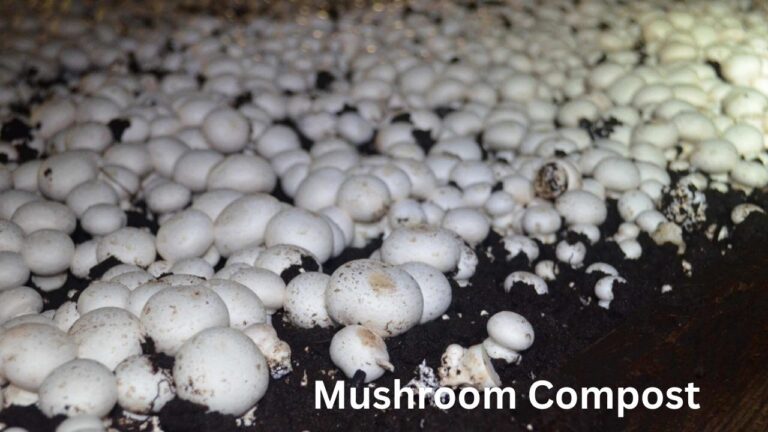Super Harnessing Biological Nitrogen Fixation in Agriculture
Table of Contents
The Importance of Nitrogen Fixation in Agriculture
Nitrogen Fixation is a fundamental element in agriculture, playing a crucial role in the growth and development of plants. It is an essential component of chlorophyll, which is responsible for photosynthesis, the process by which plants convert sunlight into energy. Furthermore, nitrogen is a key building block for amino acids, proteins, and nucleic acids, all of which are necessary for plant growth, reproduction, and overall health.
In agriculture, nitrogen is often a limiting factor for plant growth, meaning that plants require a sufficient and readily available source of nitrogen to reach their full potential. To address this need, farmers commonly use nitrogen fertilizers to supplement the soil with this vital nutrient. However, understanding the importance of nitrogen in agriculture goes beyond simply adding external inputs. By exploring the mechanisms of biological nitrogen fixation, we can unlock sustainable solutions that promote plant health, soil fertility, and environmental stewardship.

Understanding Biological Nitrogen
Biological nitrogen fixation is a crucial process in agriculture that involves converting atmospheric nitrogen into a form that plants can utilize. This natural phenomenon is primarily carried out by specific groups of bacteria, known as nitrogen-fixing bacteria, which form symbiotic relationships with plants. Through this partnership, plants provide energy sources to the bacteria while receiving essential nitrogen compounds in return, aiding in their growth and development.
Legumes, such as peas, beans, and clover, are well-known for their ability to host nitrogen-fixing bacteria in specialized root nodules. These bacteria, commonly species of Rhizobium, play a vital role in enriching the soil with nitrogen, thereby reducing the need for synthetic fertilizers in legume cultivation. By understanding the intricacies of biological nitrogen and the symbiotic relationships between plants and nitrogen-fixing bacteria, farmers and gardeners can leverage this natural process to promote sustainable agriculture practices and enhance crop productivity.

Types of Nitrogen-fixing Bacteria
Nitrogen-fixing bacteria play a crucial role in agricultural ecosystems by converting atmospheric nitrogen into a form that plants can utilize. Two common types of nitrogen-fixing bacteria are Rhizobia and Azotobacter. Rhizobia form symbiotic relationships with leguminous plants, such as peas and beans, residing in root nodules where they convert nitrogen gas into ammonia. This process benefits both the bacteria and the plant as the plant gains access to essential nitrogen while the bacteria receive necessary nutrients from the plant.
On the other hand, Azotobacter is a free-living nitrogen-fixing bacteria found in the soil. These bacteria do not form symbiotic relationships with plants but instead fix nitrogen independently, contributing to the overall nitrogen pool available to plants. Azotobacter is known for its ability to fix nitrogen aerobically, making it a valuable asset in enhancing soil fertility. Both types of nitrogen-fixing bacteria are instrumental in promoting plant growth and increasing crop productivity in agricultural systems.
Here are the types of nitrogen-fixing bacteria:
| Type of Nitrogen-Fixing Bacteria | Examples |
| Free-Living (Nonsymbiotic) Bacteria | Cyanobacteria (or blue-green algae) such as Anabaena and Nostoc. Genera like Azotobacter, Beijerinckia, and Clostridium. |
| Mutualistic (Symbiotic) Bacteria | Rhizobium, associated with leguminous plants (e.g., various members of the pea family). Frankia, associated with certain dicotyledonous species (actinorhizal plants). Certain Azospirillum species, associated with cereal grasses. |
These nitrogen-fixing bacteria play a crucial role in the nitrogen cycle by converting atmospheric nitrogen into fixed nitrogen, which is essential for plant growth. The symbiotic bacteria form intimate associations with host plants, stimulating the formation of root noodules where they convert free nitrogen to ammonia for the plant’s development.
How Legumes Benefit from Nitrogen
Legumes, such as beans, peas, and lentils, benefit significantly from biological nitrogen fixation due to their symbiotic relationship with nitrogen-fixing bacteria, especially those of the genus Rhizobium. This unique partnership allows legumes to convert atmospheric nitrogen into a form that is readily available for plant growth, providing them with a natural and sustainable source of nitrogen fertilizer. As a result, legumes are able to thrive in nitrogen-deficient soils and exhibit improved yields and overall health compared to non-leguminous crops.
Furthermore, the nitrogen-fixing ability of legumes not only benefits their own growth but also contributes to the fertility of the surrounding soil. By releasing excess nitrogen into the soil through their root nodules, legumes enrich the soil nitrogen content, making it more conducive for the growth of other plant species. This process, known as nitrogen cycling, plays a vital role in maintaining soil health and productivity in agricultural systems by reducing the reliance on synthetic nitrogen fertilizers and promoting a more sustainable and environmentally friendly approach to farming.
The table below shows how legumes benefit from nitrogen:
| Benefit | Explanation |
| Improved Soil Nitrogen Availability | Legumes have a unique ability to partner with soil bacteria to convert atmospheric nitrogen gas into a plant-useable form of nitrogen. As a result, they tend to be higher in nitrogen than other plant species, which improves soil nitrogen availability. |
| Reduced Need for Nitrogen Fertilizers | Legumes’ symbiotic relationship with nitrogen-fixing bacteria allows them to obtain nitrogen without relying on synthetic fertilizers. This reduces the need for external nitrogen inputs. |
| Increased Protein Content in Seeds | Legume seeds, such as beans and lentils, have higher protein content due to their ability to fix nitrogen. This protein-rich content is beneficial for human health. |
| Mitigation of Greenhouse Gas Emissions | Legume crops contribute to nitrogen availability in intercropped cereal fields, reducing the demand for synthetic nitrogen fertilizers and mitigating greenhouse gas emissions. |
Legumes play a crucial role in sustainable agriculture by enhancing soil fertility and providing nutritious food.
Other Plant Species that Utilize Biological Nitrogen
Some plant species beyond legumes also have the remarkable ability to harness biological nitrogen fixation to meet their nitrogen requirements. For instance, certain types of aquatic plants such as water ferns and water lilies have symbiotic relationships with specialized nitrogen-fixing bacteria. These plants play a crucial role in maintaining the nitrogen balance in aquatic ecosystems and contribute to the overall health of these environments.
Additionally, a variety of non-leguminous shrubs and trees have been found to form associations with nitrogen-fixing bacteria in their root nodules. Species like alders, bayberries, and sheoaks have been shown to benefit from this symbiotic relationship, aiding in their growth and development in nitrogen-deficient soils. By expanding our understanding of the diverse plant species that can engage in biological nitrogen fixation, we can further explore the potential applications of this natural process in various agricultural and ecological settings.

Factors Affecting the Efficiency of Biological Nitrogen Fixation
Biological nitrogen fixation is a complex process that can be influenced by several factors, ultimately affecting its efficiency. One key factor is the availability of essential nutrients like phosphorus, potassium, and molybdenum in the soil. These nutrients play a crucial role in supporting the growth and activity of nitrogen-fixing bacteria, thereby impacting their ability to convert atmospheric nitrogen into a form that plants can use.
Additionally, environmental conditions such as temperature, moisture levels, and pH can also impact the efficiency of biological nitrogen fixation. Nitrogen-fixing bacteria thrive in specific environmental conditions, and any fluctuations outside their optimal range can hinder their activity. It is important for farmers and gardeners to consider these factors when aiming to enhance the efficiency of nitrogen fixation in their soil, ultimately benefiting plant growth and promoting sustainable agricultural practices.
Here are some factors that can affect the efficiency of biological nitrogen fixation:
| Factor | Description |
| Soil Temperature | Nitrogen-fixing organisms have different temperature preferences. For example, Azospirillum species thrive in more temperate and/ or tropical environments. |
| Symbiotic Relationships | Nitrogen-fixing bacteria form symbiotic relationships with plants. The efficiency of nitrogen fixation can vary based on the specific plant-bacteria association. For instance, legumes like soybeans and clover form symbioses with bacteria such as Rhizobium and Bradyrhizobium, which contribute to efficient nitrogen fixation. |
| Energy Requirements | The reduction of atmospheric nitrogen (N₂) to ammonia (NH₃) by nitrogen-fixing microorganisms is an energy-intensive process. These organisms require ATP (adenosine triphosphate) to fuel this reaction. Non-photosynthetic free-living microorganisms obtain energy from organic molecules, while photosynthetic microorganisms use sugars produced during photosynthesis. |
| Host Plant Rhizosphere | Associative and symbiotic nitrogen-fixing microorganisms obtain necessary compounds (e.g., organic molecules) from their host plants’ rhizospheres. This interaction influences the efficiency of nitrogen fixation |
Biological nitrogen fixation plays a crucial role in providing available nitrogen for plant growth and production.
Methods to Enhance Biological Nitrogen Fixation in Soil
Incorporating organic matter into the soil is a fundamental method to enhance biological nitrogen fixation. Organic materials such as compost, manure, and cover crops provide a conducive environment for nitrogen-fixing bacteria to thrive. These materials supply essential nutrients, promote microbial activity, and improve soil structure, all of which support the process of nitrogen fixation in agricultural systems. Additionally, the addition of biochar has been shown to enhance biological nitrogen fixation by increasing the microbial biomass and creating a more stable environment for nitrogen-fixing bacteria to establish symbiotic relationships with plants.
Another effective approach to enhance biological nitrogen fixation in soil is through the inoculation of legume seeds with specific strains of nitrogen-fixing bacteria. This process, known as seed inoculation, introduces beneficial bacteria such as Rhizobium directly to the root system of leguminous plants, promoting the formation of nodules and facilitating nitrogen fixation. By carefully selecting and applying compatible bacterial strains, farmers can optimize the nitrogen-fixing capacity of legumes, leading to improved soil fertility, increased crop yields, and reduced reliance on synthetic nitrogen fertilizers.
The Role of Rhizobium in Nitrogen Fixation
Rhizobium is a genus of soil bacteria that plays a crucial role in the process of nitrogen fixation in plants, particularly in legumes. These bacteria form a symbiotic relationship with leguminous plants, such as peas, beans, and clover, where they colonize the roots and establish specialized structures called nodules. Within these nodules, Rhizobium bacteria convert atmospheric nitrogen into ammonia through the enzyme nitrogenase, which can then be utilized by the plant for growth and development.
The presence of Rhizobium bacteria in the root nodules of leguminous plants not only benefits the plant but also contributes to the overall nitrogen content of the soil. By converting atmospheric nitrogen into a form that plants can assimilate, Rhizobium bacteria play a vital role in maintaining soil fertility and reducing the reliance on synthetic nitrogen fertilizers. Additionally, the symbiotic relationship between Rhizobium and leguminous plants demonstrates the intricate balance and cooperation that exists in nature to support plant growth and ecosystem sustainability.
The table below shows the role of Rhizobium in the process of nitrogen fixation.
| Role of Rhizobium | Description |
| Symbiotic Association | Rhizobium forms a symbiotic relationship with the root nodules of leguminous plants. It cannot fix nitrogen independently; thus, it requires a plant host. |
| Nitrogen Fixation | Rhizobium is a vital source of nitrogen for agricultural soils, including those in arid regions. It converts dinitrogen (N₂) from the atmosphere into ammonia (NH₃). This ammonia is then rapidly absorbed into organic compounds. |
| Energy Consumption | The process of nitrogen fixation is energy-intensive, and Rhizobium utilizes the enzyme complex nitrogenase to reduce dinitrogen to ammonia. However, oxygen irreversibly inactivates nitrogenase. |
| Nodule Formation | After infecting the roots of leguminous plants, Rhizobium induces the formation of nodules. These nodules serve as specialized structures where nitrogen fixation occurs. |
| Soil Productivity | By fixing nitrogen, Rhizobium contributes to increasing soil productivity and soil fertility. It ensures a steady supply of nitrogen for plant growth. |
Remember that nitrogen fixation is essential for providing available nitrogen to plants, supporting their growth and development. Rhizobium is a fascinating soil bacterium that plays a crucial role in converting atmospheric nitrogen into a biologically useful form.
Symbiotic Relationship Between Plants and Nitrogen-fixing Bacteria
Plants and nitrogen-fixing bacteria engage in a mutually beneficial relationship known as symbiosis. This fascinating partnership revolves around the exchange of resources; plants provide the bacteria with sugars and other organic compounds through their roots, while the bacteria convert atmospheric nitrogen into a form that plants can readily utilize for growth and development. In this harmonious interaction, both parties thrive, with the plants receiving a vital nutrient essential for their metabolic processes, and the bacteria gaining access to a source of energy for their own survival.
The significance of this symbiotic relationship cannot be overstated in the realm of agriculture and ecological sustainability. By tapping into the biological prowess of nitrogen-fixing bacteria, plants can enhance their nitrogen uptake capacity without relying heavily on synthetic fertilizers, thereby reducing the environmental impact of excessive nitrogen usage. This natural mechanism not only bolsters soil fertility but also contributes to the promotion of diverse and resilient ecosystems, illustrating the interconnectedness and interdependence between flora and microorganisms in the intricate tapestry of nature.
The Environmental Impact of Biological Nitrogen Fixation
Biological nitrogen fixation plays a crucial role in the environment by reducing the reliance on synthetic nitrogen fertilizers, which can have detrimental effects on ecosystems. By harnessing the natural process of nitrogen fixation through the symbiotic relationship between plants and nitrogen-fixing bacteria, agricultural practices can mitigate the environmental impact of excessive nitrogen runoff, which contributes to water pollution and ecosystem degradation.
Furthermore, the use of biological nitrogen fixation promotes soil health and fertility by enhancing nutrient cycling and reducing the need for chemical inputs. This sustainable approach not only benefits crop productivity but also helps in the preservation of biodiversity and the maintenance of ecosystem balance. The environmental impact of biological nitrogen fixation extends beyond agricultural fields, supporting a more holistic and eco-friendly approach to food production that aligns with the principles of sustainable agriculture.

Challenges Faced in Implementing Biological Nitrogen Fixation in Agriculture
Implementing biological nitrogen fixation in agriculture comes with a set of challenges that need to be addressed for optimal results. One key obstacle is the variability in the effectiveness of nitrogen-fixing bacteria across different soil types and environmental conditions. The success of biological nitrogen fixation heavily relies on the presence of compatible bacterial strains in the soil, which may not always be naturally abundant or well-suited to the specific crop being cultivated.
Furthermore, the reliance on biological nitrogen fixation can be limited by the availability of essential nutrients for the growth and function of nitrogen-fixing bacteria. In some cases, deficiencies in phosphorus, molybdenum, or other micronutrients can hinder the activity of these beneficial organisms, diminishing their capacity to convert atmospheric nitrogen into forms that plants can readily utilize. Balancing the nutritional needs of both plants and nitrogen-fixing bacteria poses a significant challenge in harnessing the full potential of biological nitrogen fixation for sustainable agricultural practices.
Implementing Biological Nitrogen Fixation (BNF) in agriculture comes with its own set of challenges. Let’s explore these challenges in the table below:
| Challenges | Description |
| Increased Global Population | The growing global population, expected to reach 8 billion by 2020, necessitates increased food production. BNF can help meet this demand, but challenges remain. |
| Nitrogen-Based Fertilizer Dependency | Intensive agriculture relies heavily on nitrogen-based fertilizers. Reducing this dependency while ensuring sufficient nitrogen supply is a challenge. |
| Environmental Impact | The use of fertilizers and agrochemicals has negative effects on the environment. BNF offers an eco-friendly alternative, but implementation requires careful management. |
| Microbial Partner Selection | Identifying suitable nitrogen-fixing microorganisms (e.g., endophytes) for specific crops is crucial. Compatibility and effectiveness vary among plant-microbe associations. |
| Intracellular Accommodation | Ensuring successful colonization of plant tissues by nitrogen-fixing microbes is challenging. Establishing a symbiotic relationship within plant cells requires precise molecular interactions. |
| Plant Microbiome Control | Managing the overall plant microbiome is essential. Balancing beneficial nitrogen- fixing bacteria with other microbes is critical for sustainable BNF. |
| Cheater Control | Some microbes exploit the benefits of BNF without contributing nitrogen. Preventing cheaters within symbiotic associations is a challenge. |
Biological nitrogen fixation holds promise for sustainable agriculture, but addressing these challenges is essential.
Benefits of Biological Nitrogen Fixation for Sustainable Agriculture
One of the key benefits of biological nitrogen fixation for sustainable agriculture is its ability to reduce the reliance on synthetic nitrogen fertilizers. By harnessing the power of nitrogen-fixing bacteria, plants can access atmospheric nitrogen and convert it into a form that is readily available for plant uptake. This not only cuts down on the need for chemical fertilizers, but also helps in maintaining soil health and reducing environmental pollution.
Another advantage of biological nitrogen fixation is its contribution to increased crop productivity and yield stability. By fostering a symbiotic relationship between plants and nitrogen-fixing bacteria, agricultural systems can enhance nitrogen availability in the soil, leading to improved plant growth and development. This not only results in higher yields for farmers but also promotes a more sustainable approach to agriculture that is beneficial for the environment in the long term.
Comparing Biological Nitrogen Fixation with Synthetic Nitrogen Fertilizers
Biological nitrogen fixation and synthetic nitrogen fertilizers are two crucial methods for providing plants with the essential nutrient they need to grow and thrive. While synthetic nitrogen fertilizers are widely used due to their immediate availability and convenience, they come with environmental drawbacks such as leaching into water sources and contributing to greenhouse gas emissions. On the other hand, biological nitrogen fixation, carried out by nitrogen-fixing bacteria in symbiosis with plants, offers a more sustainable and eco-friendly approach to nutrient acquisition.
Studies have shown that the use of biological nitrogen fixation not only reduces the need for synthetic fertilizers but also improves soil health and promotes long-term sustainable agricultural practices. By harnessing the natural ability of plants to form symbiotic relationships with nitrogen-fixing bacteria, farmers can minimize their environmental footprint while fostering healthier and more resilient crop systems. Despite the challenges in implementing biological nitrogen fixation on a large scale, its potential benefits for sustainable agriculture make it a promising avenue for future research and innovation.
Let’s compare Biological Nitrogen Fixation (BNF) with Synthetic Nitrogen Fertilizers:
| Aspect | Biological Nitrogen Fixation (BNF) | Synthetic Nitrogen Fertilizers |
| Source of Nitrogen | BNF relies on nitrogen-fixing microorganisms (e.g., Rhizobium, Azotobacter, and Frankia) to convert atmospheric nitrogen (N₂) into ammonia (NH₃). | Synthetic fertilizers contain chemically synthesized nitrogen compounds, such as ammonium nitrate (NH₄NO₃) and urea (CO(NH₂)₂). |
| Sustainability | BNF is environmentally friendly and sustainable. It reduces reliance on synthetic fertilizers and minimizes pollution. | Synthetic fertilizers have environmental drawbacks, including nitrate leaching, greenhouse gas emissions, and soil acidification. |
| Energy Requirements | BNF requires energy for nitrogen fixation, but it occurs naturally. | Synthetic fertilizer production consumes significant energy during manufacturing. |
| Cost | BNF is cost-effective once established, as it relies on natural processes. | Synthetic fertilizers have ongoing costs due to production and distribution. |
| Crop Associations | BNF is common in leguminous plants (e.g., soybeans, clover, and peas) due to symbiotic relationships with nitrogen-fixing bacteria. | Synthetic fertilizers can be used for various crops, regardless of plant-microbe associations. |
| Nitrogen Availability | BNF provides a steady supply of nitrogen to plants, enhancing soil fertility. | Synthetic fertilizers deliver nitrogen rapidly but may lead to imbalances and nutrient runoff. |
| Environmental Impact | BNF has minimal environmental impact, promoting soil health and biodiversity. | Synthetic fertilizers contribute to water pollution, eutrophication, and soil degradation. |
Remember that both approaches have their merits and challenges. While BNF is sustainable, synthetic fertilizers offer immediate nitrogen availability. Farmers often use a combination of both methods to optimize crop productivity.
Innovations in Biological Nitrogen Fixation Research
Recent innovations in biological nitrogen fixation research have led to exciting developments in the field of sustainable agriculture. Scientists are exploring novel ways to enhance the efficiency of nitrogen-fixing bacteria in soil, ultimately reducing the need for synthetic fertilizers. One promising approach involves the use of biotechnology to engineer plants that can form symbiotic relationships with more effective nitrogen-fixing microbes, further optimizing nutrient uptake and utilization.
Moreover, advancements in genetic engineering have facilitated the modification of nitrogen-fixing bacteria to make them more resilient in diverse environmental conditions. This has the potential to expand the range of plant species that can benefit from biological nitrogen fixation, offering new opportunities for boosting crop yields while minimizing the environmental impact of agricultural practices. By harnessing these cutting-edge innovations, researchers are paving the way for a more sustainable and resource-efficient approach to nitrogen management in agriculture.
Future Prospects of Biological Nitrogen Fixation in Agriculture
Biological nitrogen fixation holds significant promise for the future of agriculture due to its environmentally friendly and sustainable nature. By harnessing the natural symbiosis between certain plants and nitrogen-fixing bacteria, we can reduce reliance on synthetic fertilizers, which have detrimental effects on ecosystems. As we strive for more sustainable farming practices, the potential of biological nitrogen fixation to enhance soil fertility and crop productivity becomes increasingly appealing.
Furthermore, ongoing research and technological advancements offer exciting prospects for optimizing biological nitrogen fixation in agriculture. From developing novel inoculants to improving the efficiency of nitrogen-fixing bacteria, scientists and agronomists are exploring innovative strategies to unlock the full potential of this natural process. By investing in research and education, we pave the way for a future where biological nitrogen fixation plays a central role in promoting soil health, enhancing crop yields, and fostering sustainable agricultural practices.
To Know More About Biological Nitrogen Fixation In Agriculture, Watch This Video!
What are some potential future applications of biological nitrogen fixation in agriculture?
Future prospects include developing novel nitrogen-fixing bacteria strains, improving symbiotic relationships between plants and bacteria, and enhancing the efficiency of nitrogen fixation processes in non-legume crops.
How can biological nitrogen fixation help address environmental concerns related to synthetic nitrogen fertilizers?
Biological nitrogen fixation reduces the need for synthetic fertilizers, which can contribute to soil degradation, water pollution, and greenhouse gas emissions. By promoting the use of biological nitrogen fixation, we can reduce these environmental impacts.
Are there any ongoing research efforts focused on improving biological nitrogen fixation in agriculture?
Yes, researchers are exploring ways to optimize nitrogen-fixing bacteria strains, enhance the symbiotic relationship between plants and bacteria, and develop new technologies to increase the efficiency of biological nitrogen fixation in agricultural systems.
What role does Rhizobium play in the process of nitrogen fixation?
Rhizobium is a type of nitrogen-fixing bacteria that forms a symbiotic relationship with leguminous plants. It infects the plant roots and forms nodules where nitrogen fixation occurs, providing the plant with a source of fixed nitrogen.
How can farmers benefit from implementing biological nitrogen fixation in their agricultural practices?
By utilizing biological nitrogen fixation, farmers can reduce their dependency on synthetic fertilizers, improve soil health and fertility, increase crop productivity, and contribute to more sustainable agricultural practices in the long term.






